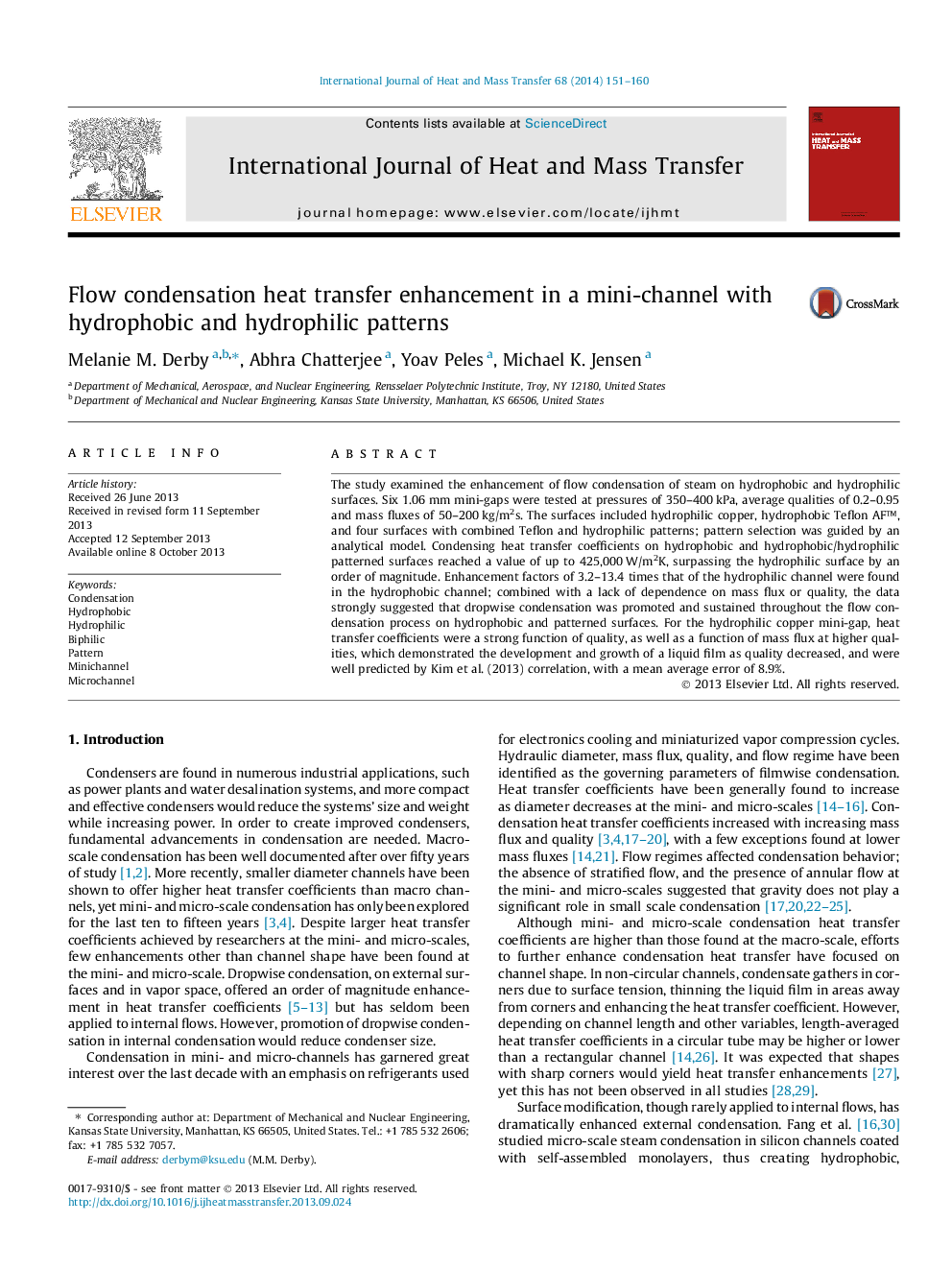| Article ID | Journal | Published Year | Pages | File Type |
|---|---|---|---|---|
| 658035 | International Journal of Heat and Mass Transfer | 2014 | 10 Pages |
The study examined the enhancement of flow condensation of steam on hydrophobic and hydrophilic surfaces. Six 1.06 mm mini-gaps were tested at pressures of 350–400 kPa, average qualities of 0.2–0.95 and mass fluxes of 50–200 kg/m2s. The surfaces included hydrophilic copper, hydrophobic Teflon AF™, and four surfaces with combined Teflon and hydrophilic patterns; pattern selection was guided by an analytical model. Condensing heat transfer coefficients on hydrophobic and hydrophobic/hydrophilic patterned surfaces reached a value of up to 425,000 W/m2K, surpassing the hydrophilic surface by an order of magnitude. Enhancement factors of 3.2–13.4 times that of the hydrophilic channel were found in the hydrophobic channel; combined with a lack of dependence on mass flux or quality, the data strongly suggested that dropwise condensation was promoted and sustained throughout the flow condensation process on hydrophobic and patterned surfaces. For the hydrophilic copper mini-gap, heat transfer coefficients were a strong function of quality, as well as a function of mass flux at higher qualities, which demonstrated the development and growth of a liquid film as quality decreased, and were well predicted by Kim et al. (2013) correlation, with a mean average error of 8.9%.
